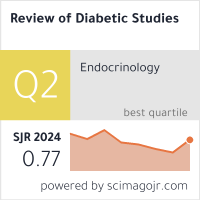Prevalence of Salmonella Contamination and Phenotypic Antibiotic Resistance Patterns to Tetracyclines and Sulfonamides in Eggs from Selected Iranian Brands
DOI:
https://doi.org/10.70082/egq79s33Keywords:
Salmonella, egg, antibiotic resistance, tetracycline, biofilm.Abstract
Objective: This study aimed to determine the prevalence of Salmonella contamination in eggs from selected Iranian brands and to investigate the phenotypic antibiotic resistance profiles of the isolated strains against tetracycline and sulfonamide families. In addition, the biofilm-forming ability of the isolates was evaluated as a virulence and survival factor.
Methods: A total of 830 egg samples were collected from various Iranian brands. Isolation and identification of Salmonella were performed using selective media (including XLD and MacConkey agar) and standard biochemical tests. Antibiotic resistance of 22 confirmed isolates was assessed by the disk diffusion method according to CLSI 2019 guidelines. Finally, biofilm-forming ability was evaluated using a microtiter plate assay.
Results: Out of all samples, 22 multidrug-resistant (MDR) Salmonella isolates were recovered. The phenotypic antibiogram revealed a very high level of resistance: 90% of the isolates exhibited resistance to all tetracycline-family antibiotics, including tetracycline and doxycycline. These strains also showed resistance to sulfonamides and nitrofurantoin. Molecular analysis attributed this resistance mainly to the presence of the tetC (81%) and sul2 (95.5%) genes. Moreover, the isolates demonstrated significant biofilmforming ability, indicating their high potential for persistence and cross-contamination.
Conclusion: Eggs distributed in the Iranian market may serve as potential sources of MDR Salmonella strains. The widespread phenotypic resistance to tetracyclines and sulfonamides—likely resulting from antibiotic misuse in the poultry industry—poses a serious public health concern. Therefore, strict surveillance along the production chain, rigorous enforcement of hygiene regulations, and prudent antibiotic stewardship are essential to prevent the transmission of resistant bacteria to humans.
Downloads
Published
Issue
Section
License

This work is licensed under a Creative Commons Attribution-ShareAlike 4.0 International License.


